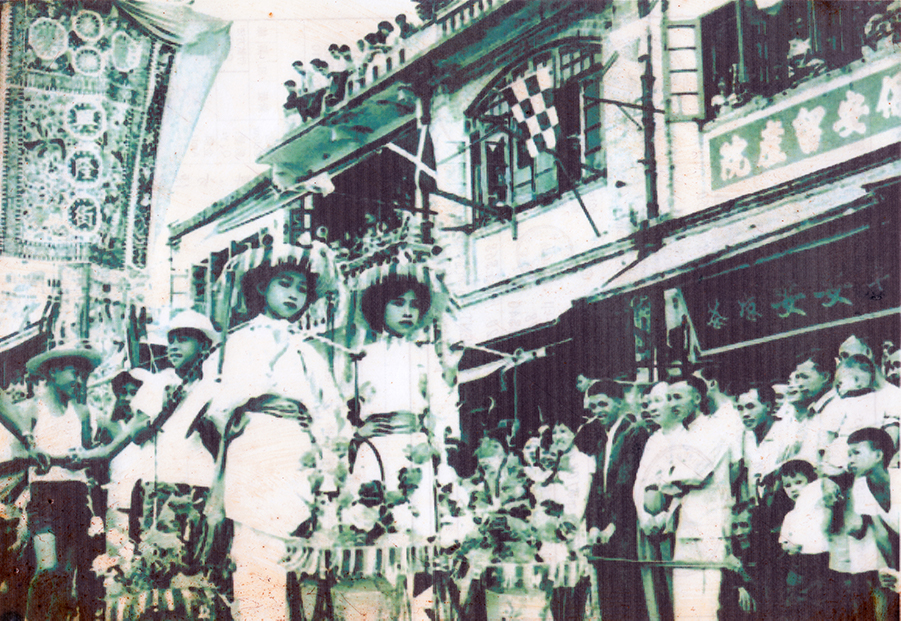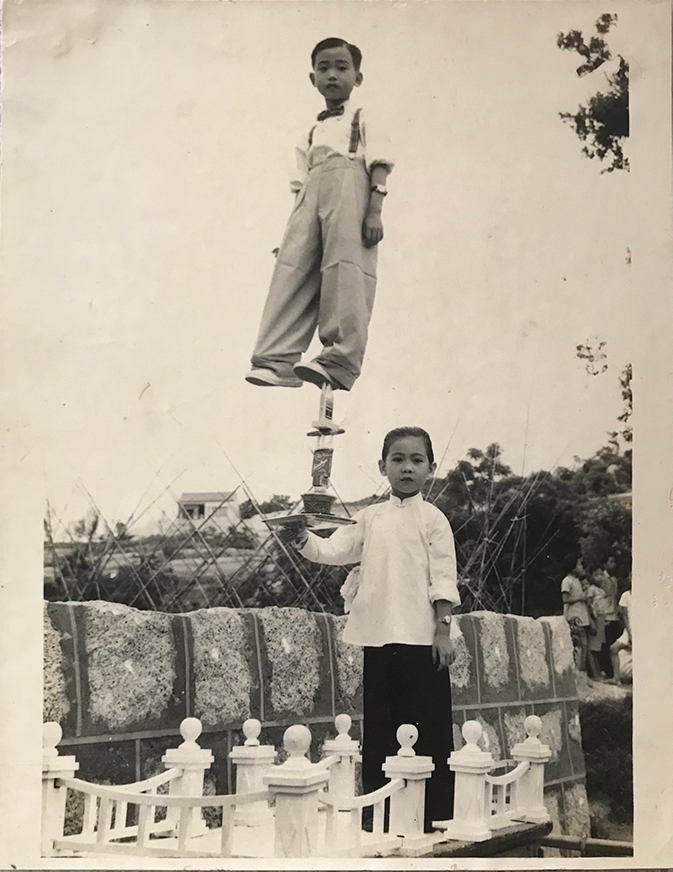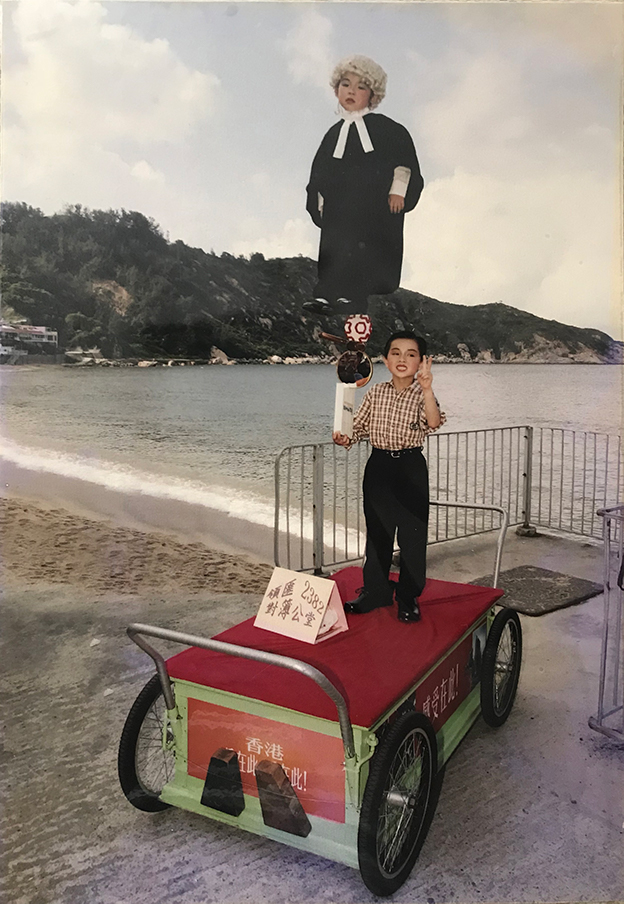OriginIntroductionAuthorized by Getty Images (2019) According to the narrative contained in the literature regarding Cheung Chau, the island’s Jiao Festival “originated in Tai Ping Shan (Victoria Peak) on the Hong Kong Island. Plague once broke out in the late Qing dynasty in the late 19th century. At that time, a Jiao ceremony was held for passing the spirits of the deceased over the borders to the realm of the dead and to purify the plague at the Pak Tai Temple in Tai Ping Shan. Later, Hailufeng clansmen (Hailufeng clan is the abbreviation of the Haifeng clan and the Lufeng clan in Shanwei City) brought the ceremony to Cheung Chau and hosted it in their neighbourhood around the Pak She Street.1 In the ceremony, the islander held the representation of various deities on the island on a “Parade of the Gods”, with Pak Tai (Heavenly Highest Deity) leading, followed by the representation of other island's deities to march through the streets in Cheung Chau. This is one type of ritual for rewarding the deities and praying for their blessings. The plague was gone not long afterwards. Hence the islanders continued to host the Jiao ceremony annually to pray for peace and protection of Cheung Chau and blessings from the God’s spirits to keep both the waters and the land tranquil. Another story about the origin of the Jiao Festival says that a plague broke out in Cheung Chau; after that there is a saying that, the islanders prayed to Pak Tai to seek for guidance. According to the legend, the islanders heard the response from Pak Tai: “If you carry me up to go around the island, the plague will be gone”. Islanders thus followed the “sacred order”, and the plague ended. As a result, islanders continued to march through the streets in Cheung Chau with Pak Tai on palanquin every year. In the early days, the Cheung Chau Jiao Festival started off as a religious activity comprising Taoism rituals like “bun scrambling competition”, fasting, evening service and noon service. And since many folks were killed in the plague, the Jiao Festival provided islanders with a chance to conduct religious rites to chase away the ghost spirits remaining in this world and let them transit to the realm of the Dead. Besides, the Festival in its original form did not have Piu Sik. It is believed the Festival only began to include Piu Sik in parades around ninety years ago. Rumour has it that a Cheung Chau inhabitant saw a Piu Sik parade on his trip to Foshan. He then introduced Piu Sik to the parades of the Cheung Chau Bun Festival. Subsequently, teams of the different streets exerted their creativity in producing Piu Sik sets on a variety of themes. Today, the Piu Sik Parade has become a significant feature of the Cheung Chau Jiao. It is generally accepted that the teams of different streets in Cheung Chau are the masterminds behind the development of the Piu Sik Parade. Each of the groups attempted to win audience attention by creating unique themes and contents in their Piu Sik sets. This positive competition also contributes to the diversification and attractiveness of the parade. As for the craft of the Piu Sik production, parade teams have kept the fundamental craft structure, namely the steel frame, hovering kids, and Piu Sik cart, and expanded and elaborated it further into a vertical composition. Besides, unlike the Piu Sik in Foshan, the themes of Cheung Chau Piu Sik are not limited to folk operas and tales in ancient costume. Instead, Cheung Chau Piu Sik has evolved and diversified with the trend of local politics, culture, and social ecology. Piu Sik teams often adapt current affairs, political satire, or popular culture like TV dramas for their Piu Sik sets to appeal to the audience. The diversity of themes and contents of Cheung Chau Piu Sik makes it a distinctive variant to the Piu Sik in other regions. (Figure 1, 2, 3) In contrast to the political situation in mainland China at the time, the British government was supportive of traditional activities in Hong Kong during the colonial era.2 (Figure 4) Therefore, being a traditional Chinese craft initiated by the community, Piu Sik has been preserved and inherited in Hong Kong despite the region being developed from a small agricultural society to an international financial hub. 
(Figure 1) The Piu Sik in 60s. Authorized by Hing Lung Street Kai-Fong Association (2019) 
(Figure 4) Historical photo took in 1953. Authorized by Pak She Street Association (2019) After 1997, the government of the Hong Kong Special Administrative Region set the Buddha's birthday, 8th April in Lunar calendar, as a public holiday. Then in 2001, the same date was also selected for the Cheung Chau Bun Festival through a moon blocks divination. Hence, the islanders once again resorted to the spiritual power of Piu Sik to enquire whether the date is suitable for Jiao Festival every year in the future. Without surprise, it is said that the deity gladly agreed. From then on, the islanders no longer need to pick the date for the Festival through moon blocks divination. The Cheung Chau Bun Festival was inscribed onto the National List of Intangible Cultural Heritage of China in 2011. Although the Piu Sik Parade is only one of the many activities in the Festival, its accessible content and visual elements make it much more compelling than the repetitive Bun Scrambling Competition. The diverse themes of the Piu Sik and the adorable hovering kids are prone to win most attention among all the rituals in the Festival. Nevertheless, the Piu Sik Parade still retains its original nature as a God Pageant ceremony despite its ever-evolving appearance. This is an ideal embodiment of the inheritance of the core value of the Cheung Chau Bun Festival as agreed by historical researchers. 1 Personal, Social & Humanities Education (2014). Case Study of Local Heritage Studies: Cheung Chau Jiao Festival, Hong Kong Education Bureau. Retrieved from https://www.edb.gov.hk/attachment/tc/curriculum-development/kla/pshe/references-and-resources/history/Dajiao_whole_Chi.doc 2 Dr. MA Muk-chi stated the colonial government requested the different districts in Hong Kong to host various events to celebrate the coronation of Queen Elizabeth II. Since many local people participated in these western and colonial-style celebrations, they had been influencing some Chinese traditions in Hong Kong. |


